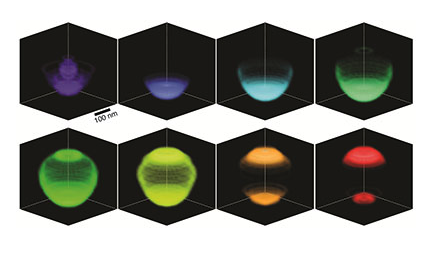Members Login

Channels
Special Offers & Promotions
DELMIC Reports on a Nature Nanotechnology Paper from Stanford University and the FOM Institute AMOLF on Nanoscale Optical Tomography with Cathodoluminescence Spectroscopy (SPARC)

DELMIC develops and manufactures products which are focused on high performance, user friendly, integrated microscopy solutions.
Users of Delmic's SPARC technology from Stanford University and the FOM Institute AMOLF in the Netherlands are using cathodoluminescence measurements for nanoscale optical tomography.
Engineers at Stanford University and the FOM Institute AMOLF, in the Netherlands, have developed a way to visualise the optical properties of objects that are thousands of times smaller than a grain of sand, in 3-D and with nanometer-scale resolution by using Delmic's cathodoluminescence detection system (SPARC).
To design the next generation of optical devices ranging from efficient solar panels to LEDs to optical transistors, engineers will need a three-dimensional image depicting how light interacts with these objects on the nanoscale. Unfortunately, the characterisation of optical properties at the nanoscale is a challenge due to the diffraction limit which is an inherent limitation of conventional optical techniques. As a result, cathodoluminescence, or CL, is becoming an increasingly popular technology for engineers.
By combining cathodoluminescence with tomographic reconstruction methods, there is a unique combination of two techniques to enable the generation of three-dimensional maps of the optical landscape of objects with nanometre-scale resolution. The researchers have published this study in the journal, Nature Nanotechnology.1 The paper demonstrates how cathodoluminescence tomography can be used to achieve nanoscale three-dimensional visualization of light-matter interactions by reconstructing the optical response of a three-dimensional metal-dielectric crescent nanoresonator.
CL has been co-developed by Delmic into a product called SPARC, a high-performance cathodoluminescence detection system, together with co-author Albert Polman and his group at AMOLF. It is available commercially as retrofit for a Scanning Electron Microscope (SEM). The SPARC system is unique due to its modularity, sensitivity and reproducibility. The system opens up new avenues of research such as Electron Beam Induced Nanophotonics, but its sensitivity and ease of use also make it possible to breathe life into more ‘traditional’ applications of cathodoluminescence such as found in geology and the materials sciences.
Media Partners


